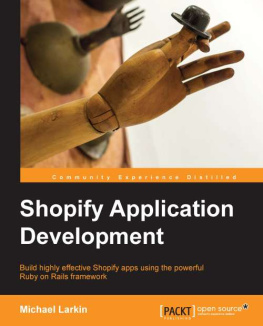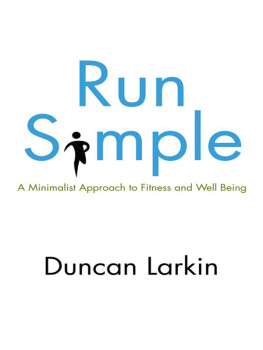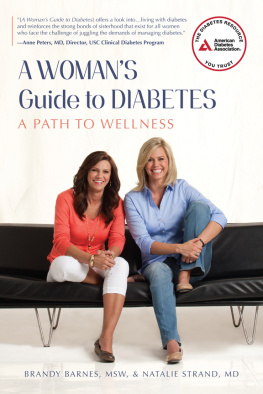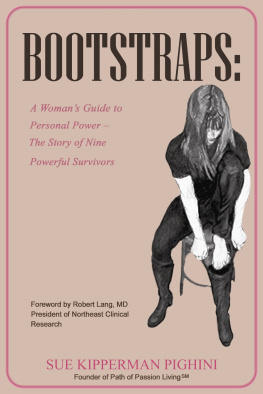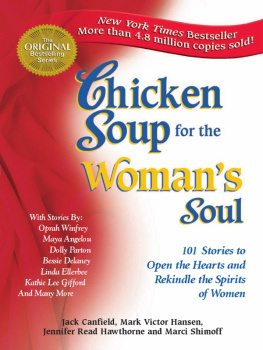Coming out:
First desire. First awareness that desire may not be told. First awareness that another is gay or lesbian, perhaps without having words for this yet. First time being called a lesbianor lezzie or dyke or queer . First time naming oneself lesbianor femme or butch, bisexual or transgender, outlaw or not sure, but First kiss with a woman. First time making love with a woman. First time getting caught. First affirmation by another.
Coming out is shorthand for countless passages, chosen and forced, welcome and unwelcome. The same phrase can mean a long struggle to let go of sexual conformity or a single moment of remembering early stirrings, before they were labeled and censored. And coming out means the necessary, ongoing courage to be visible. To risk ostracism, violence, and loss. To embrace ones core sense of selfwhether through rebellion, defiance, mourning, laughter, relief, or tenderness.
When I began editing A Woman Like That, I invited lesbian and bisexual writers of various ages and backgrounds to write their coming-out stories. I didnt anticipate the rich complexity of experience these memoirs would encompass, nor did I begin to suspect the powerful impact they would have on me personally. These stories illuminated experiences that years of living out had blurred. I recognized feelings I thought no longer lived inside me. Reading this book, I encountered my vulnerability, anger, and optimism, my core of emotional strength.
Having read lesbian writing for twenty-five years and coedited three anthologies of lesbian and gay poetry, I thought I already knew the full spectrum of experiences we call coming out. I loved the range and variety of lesbian voices: I cannot forget the open mike night in the mid-seventies at which a lesbian ex-nun told bawdy stories of sex in the convent; the crackling intelligence of Martha Shelleys WBAI-FM radio show Lesbian Nation (the fan letter I wrote her was part of my own coming-out process: it led to out meeting and my initiation into the mysteries of lesbian bars, politics, and sex); critic Jill Johnstons original, idiosyncratic voice in the Village Voice dance column she had transformed with revelatory autobiographical writing and queer cultural commentary; and poet Adrienne Richs thrilling voice at a New York City Pride rally urging us to expand what we meant by our love for women. Unlike the previous generation of writers, who had discreetly downplayed or concealed their lesbian themes, my generation seemed to be coming out together.
Poet Muriel Rukeyser first articulated the startling idea that the core of a womens writing must be her own vision and experience:
What would happen if one woman told the truth about her life?
The world would split open.
As woman-owned presses, bookstores, magazines, and distribution networks proliferated in the seventies and eighties, women found courage to break lifetimes of silence. The feminist movement that inspired us was fueled and shaped by writersmost eloquently by lesbian poets such as Judy Grahn, Adrienne Rich, and Audre Lorde, who insisted on the power of language to transform our vision, our selves, and our world. Lesbian writers, working perhaps for the first time within a responsive community, began producing a vital body of workwork by women speaking to other women of experiences that pertained directly to our own memories and moral lives. And still, in a culture that continued to judge love between women degenerate and dangerous, coming out in print meant breaking a taboo. Judy Grahn, who had witnessed the McCarthy eras vilification of perverts and subversives, and who had directly experienced the militarys witch-hunting of lesbians, kept The Psychoanalysis of Edward the Dyke in notebooks for seven years before publishing it in 1971. What would in time become the title poem of Fran Winants Dyke Jacket was first published with the less in-your-face title My New Jacket. Elly Bulkin and I called out 1975 anthology Amazon Poetry; the more explicitly titled Lesbian Poetry came six years later.
Today, coming out has supposedly gone mainstream. TV shows have their requisite gay characters, and the places where the word lesbian can be uttered without a blush or an angry stance have increased dramatically. The past few years have seen the publication of numerous lesbian anthologies, most by large commercial presses. Clare Coss The Arc of Love, Beatrix Gates The Wild Good, Lisa Moores Does Your Mama Know?, Eileen Myles and Liz Kotz The New Fuck You, Lesla Newmans My Lover Is a Woman, and Gerry Gomez Pearlbergs The Key to Everything are only a few. This wealth of books suggests that coming out in print in the tolerant, tell-all times we inhabit is no longer a challenge. But the prominence of the homophobic Christian Right, the continuing violence against us, from gay-bashing to gay murder, the absencestillof human rights protection for lesbian and gay people throughout much of the country are harsh reminders that for most, there is still a price for coming out.
Several contributors to A Woman Like That acknowledged that exploring the territory of their own coming out in writing was unexpectedly difficult. Seasoned writers told me how arduous, even painful, it was to explore coming-out memories that had long been held under pressure at a depth. One novelist said that her familys rejection of her as an open lesbian had been too agonizing to revisit; she was unable to complete her story. Another, author of a soul-searching memoir and surely no coward, wrote a haunting piece about her first erotic experience with a woman, but withdrew it when she remembered that the words lesbian and bisexual would appear in the books subtitle. These are indeed powerful words. I am deeply indebted to the writers who are free to embrace them.
Many writers in this collection recall childhood desire, embryonic lesbian hunger, and the innocence and mystery of those feelings on the brink of collision with the straight world. One writer asserts that she was born queer, while another confesses to the sin of convertingimplying that, contrary to current rules of political correctness, some feel they have chosen to be lesbians. Some write with youthful ebullience and wit of adventures as sex-positive lesbians, with almost a gasp of surprise at the seeming absence of oppression in their lives. A handful write of uncommonly loyal families that nurtured independence in childhood and remain a source of strength to their unconventional daughters.
Some contributors write of harsh punishment rendered for sexual nonconformity and of the survival skills and moral intelligence they have wrested from their experiences. Two write of their incarceration in mental institutions as young gay women, and of the exhilaration of release. Another, stunned by the abrupt firing of teachers rumored to be lesbians, learns that even a progressive environment may be unapologetically homophobic; her knowledge of danger ultimately empowers her to speak against injustice. One writer, who tells of coming out to the sons of whom she has lost custody, speaks of having cracked open their small universea shattering, but one that allows light and the possibility of new knowledge and connection.


